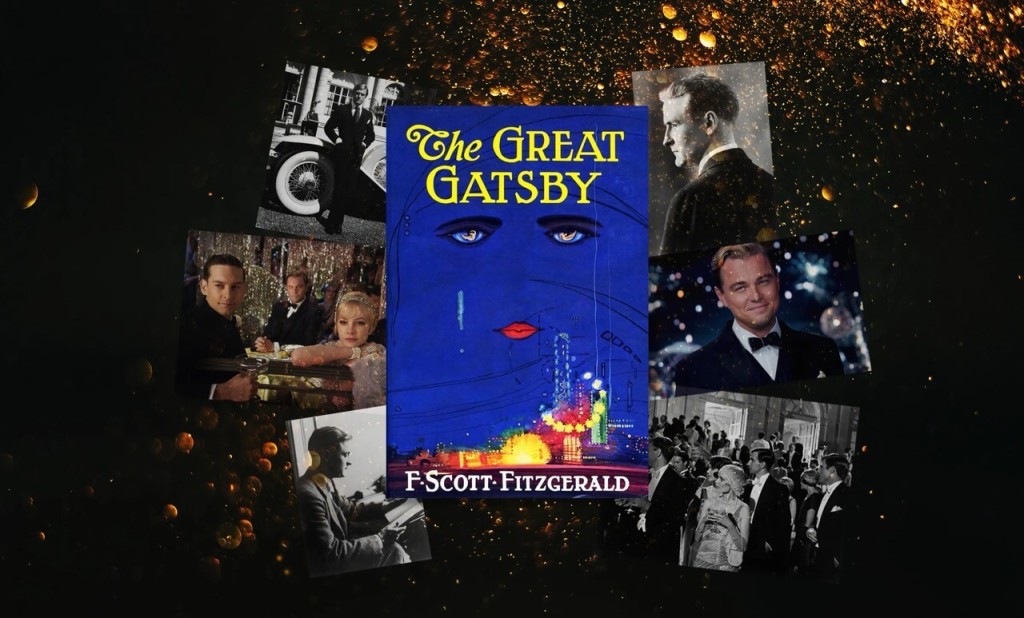The Great Gatsby, F. Scott Fitzgerald’s third book, stands as the supreme achievement of his career. This exemplary novel of the Jazz Age has been acclaimed by generations of readers. The story of the fabulously wealthy Jay Gatsby and his love for the beautiful Daisy Buchanan, of lavish parties on Long Island at a time when The New York Times noted “gin was the national drink and sex the national obsession,” it is an exquisitely crafted tale of America in the 1920s.
Set in the Jazz Age on Long Island, near New York City, the novel depicts first-person narrator Nick Carraway’s interactions with mysterious millionaire Jay Gatsby and Gatsby’s obsession to reunite with his former lover, Daisy Buchanan.
The story is narrated by Nick Carraway, a Yale graduate and World War I veteran, who moves to West Egg, Long Island, in the summer of 1922 to learn about the bond business. Nick rents a modest house next to the mansion of the enigmatic and wealthy Jay Gatsby, who is known for throwing lavish parties every Saturday night.
As the story unfolds, Nick learns that Gatsby is deeply in love with Nick’s cousin, Daisy Buchanan, who lives across the bay in East Egg with her husband, Tom Buchanan. Gatsby’s immense wealth and his extravagant lifestyle are all attempts to win back Daisy, whom he met and fell in love with during World War I.
Gatsby and Daisy begin an affair, but their relationship is doomed by the differences in their social status and the moral decay that underlies their world. The novel culminates in tragedy when Gatsby takes the blame for a car accident caused by Daisy, leading to his untimely death at the hands of George Wilson, the husband of Tom’s mistress, Myrtle. In the end, Gatsby’s dream dies with him, and Nick reflects on the empty pursuit of the American Dream.

The most notable film adaptations include the 1974 version directed by Jack Clayton, starring Robert Redford and Mia Farrow, and the 2013 adaptation directed by Baz Luhrmann, starring Leonardo DiCaprio, Carey Mulligan, and Tobey Maguire. Both adaptations brought renewed interest and modern interpretations to Fitzgerald’s timeless story.
F. Scott Fitzgerald’s “The Great Gatsby” continues to captivate readers with its rich symbolism, memorable characters, and poignant critique of the American Dream. Its exploration of love, loss, and the quest for identity resonates across generations, solidifying its place as a cornerstone of American literature. Through Gatsby’s tragic pursuit of an unattainable dream, Fitzgerald offers a timeless reflection on the human condition and the illusions we chase.
F. Scott Fitzgerald
F. Scott Fitzgerald was an American novelist and short story writer widely regarded as one of the greatest American writers of the 20th century. Known for his evocative portrayal of the Jazz Age, Fitzgerald’s work encapsulates the era’s exuberance, moral decay, and the American Dream’s disillusionment.
Fitzgerald was born in St. Paul, Minnesota, to an upper-middle-class family. He attended the St. Paul Academy and later the Newman School in New Jersey. In 1913, he enrolled at Princeton University, where he honed his writing skills and contributed to the Princeton Triangle Club and the Princeton Tiger humor magazine. However, he left Princeton without a degree in 1917 to join the army during World War I.
F. Scott Fitzgerald’s portrayal of the Jazz Age has left a lasting impact on American culture and literature. His works offer a window into the aspirations, excesses, and disillusionments of the 1920s, making him an enduring figure in the literary canon. “The Great Gatsby,” in particular, continues to be a critical reference point for discussions about the American Dream and societal values.
